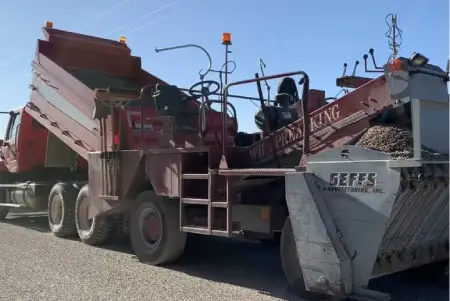
What is a Chip Spreader?
A chipping spreader is a machine that lays coated chippings on roads for a maintenance treatment called a Chip Seal. A chipping treatment helps to strengthen the lifecycle of a road by protecting it against things such as
- Harsh temperatures
- Weather conditions
- Heavy traffic
There are many different types of chipping spreaders. They all are designed to spread chips in road construction, but they are all managed differently. There are self-propelled chip spreaders, lift-type chip spreaders, pull-type chip spreaders and many more.
Key Parts of Chip Spreaders
According to Camamach, a company that buys and sells mining and construction machinery, these are the key parts of a chip spreader.
- Gates – Chip spreaders have ten gate that are controlled through cylinders with switches. These gates can be adjusted to perform uniform distribution at any specific speed.
- Hoppers – Hoppers can be either fixed or variable. They include individual gates. The chipping material is delivered through the gates at the desired spread width.
- Hydrostatic Drive – This is an ideal system that is preferred over other methods to adjust the speed according to the road size.
- Anti-skidding Rollers – These ensure that the distribution of the chipping material is uniform.
- Conveyor Belt – The conveyor belts transfer the chipping material from receiving hopper to the spread hopper.
- Controls – The computer controls on the chip spreader open the gates and adjust spreading speed.
When Using a Chip Spreader
There are many precautions that must be taken when using a chip spread. Before a chip spreader can be touched, everyone involved, even if they are not driving it, must be trained on how it works and how to work the controls. There are also required pre and post shift inspections which includes checking everything from the seat and mirrors to the hoppers and controls.
It is important to know and follow safe operation practices when using a chip spreader. A single mistake might cost someone their life. One example of safe operation practice is actively wearing the proper PPE. Some examples are listed below.
- Gloves and proper footwear
- Hearing protection
- Hard hat
Safety is everyone’s responsibility. Follow all safe work practices and safety regulations applicable to your workplace. For more information or trainings on the chip spreader, please visit the Hard Hat Training Series.
